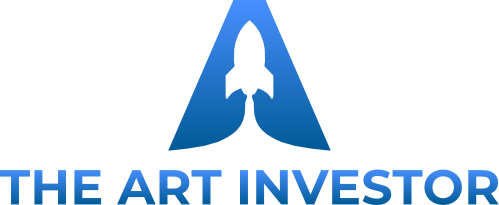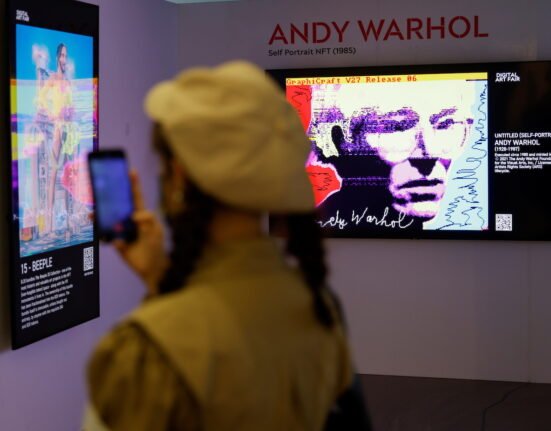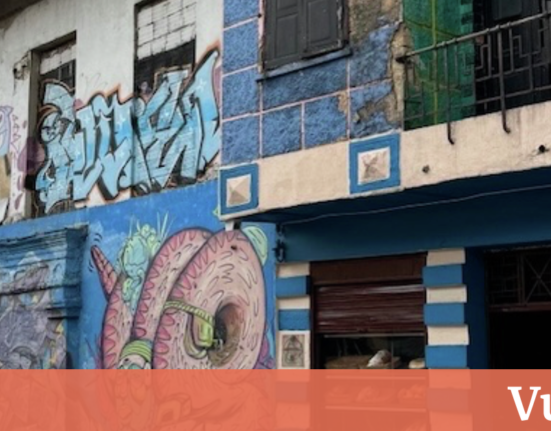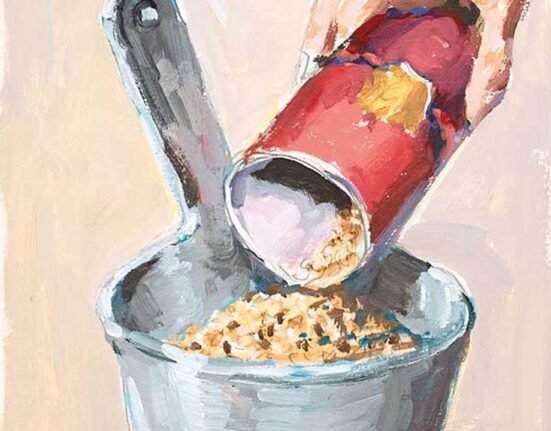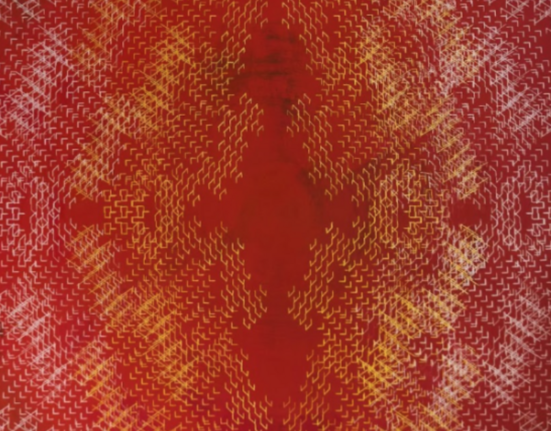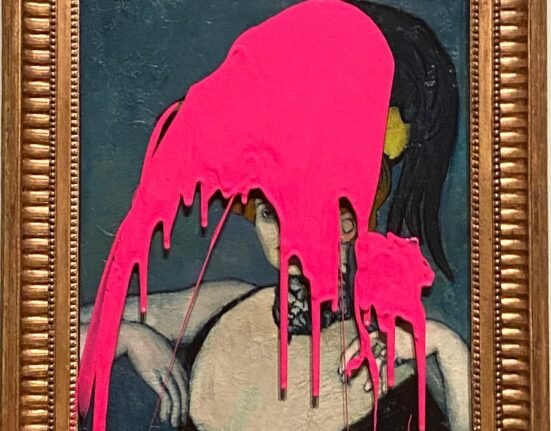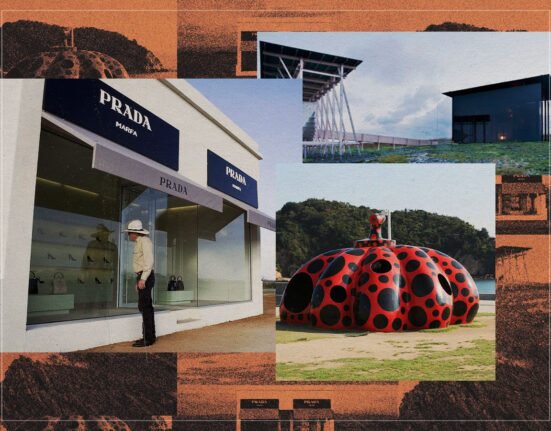Every June, the international art community gathers in the small Swiss city of Basel, on the Rhine river, near the borders of France and Germany. Attracting influential gallerists, collectors, curators, museum directors and critics from around the globe, Art Basel is considered the world’s largest and most prestigious art fair, second-oldest only to Cologne.
The Messe Basel exhibition centre, home of the fair, is enormous. Its show floor is approximately the same size as the Calgary International Airport terminal building. Over five days, nearly 100,000 people will visit — including some prepared to spend astonishing sums. In past editions, artworks from blue chip talents, like Joan Mitchell, Philip Guston and Louise Bourgeois, have fetched eight-figure price tags.
This year, 289 galleries from 42 different countries have travelled to show their wares. Amid displays from global art stars and mega-galleries operating on multiple continents, there is a small contingent of Canadian exhibitors, including both stalwarts who have a long history at the fair and newcomers making their maiden voyage.
While it is an accomplishment just to be accepted into the ultra-competitive and rigorously juried event, it is also a gamble — especially in this rocky economic climate. The art market is currently in decline. For the past two years, headlines have declared “A sharp downturn in the art market” and “The art market is tanking.” In April, Art Basel and the Swiss bank UBS published their annual Art Market Report, which found global sales dropped 12 per cent last year.
So why are more Canadian galleries taking this moment to wade deeper into the international art market?
Well, the report also found that bleeding has been worse at the top. Smaller galleries (i.e. operations with total revenue less than $250,000 USD) have actually experienced a 17 per cent increase in sales. For some, this slump represents an opportunity.
“We’re seeing fresh momentum around smaller galleries and emerging artists,” says Maike Cruse, director of Art Basel in Basel. “Collectors are eager to discover fresh voices and accessible entry points.”
Statements is a section within Art Basel dedicated explicitly to these voices. It highlights emerging talents with solo presentations from 18 artists. Cruse calls it “a place for discovery — where curators, collectors, and critics come to find the artists shaping the future.” This year, visitors will find Montreal’s Galerie Eli Kerr there, with a project by Joyce Joumaa, as well as Toronto’s Franz Kaka, showing the work of Elif Saydam, marking just the second time Canadians have participated in Statements since it began nearly 30 years ago.

Eli Kerr, founder of the eponymously named Plateau gallery, sees the opportunity as a “stepping stone” to the main event. He launched the gallery five years ago under a different moniker in a room “about as big as a parking space,” he says. Today, his roster includes established Canadian artists like Valérie Blass and Alan Belcher as well as rising talents, such as Joumaa and Maggy Hamel-Metsos. The young commercial gallery began attending international fairs in the past few years, and the excursions — which foster not only sales, but visibility and connections, too — have become an increasingly vital piece in its strategy.
“It’s been quite tough navigating all these sovereignty and tariff questions, so there’s been a concentrated effort to focus more on Europe,” Kerr says. “The world’s closing in; you have to go where it’s opening up, right?”
“I’m starting to see, cumulatively, over the years, that doing this trip, it leads to things,” he adds.

For the past two years, Galerie Eli Kerr has participated in Liste, a companion fair that happens in Basel simultaneous to the Big Show. Last year, Kerr brought the work of Hamel-Metsos to Liste. This year, the artist has returned to Switzerland with the gallery team in preparation for a solo exhibition in Zurich this August — a direct result of her appearance last summer.
In Statements for its Art Basel debut, Galerie Eli Kerr is showing a new work by Joumaa called Periodic Sights. The Lebanese Canadian artist, based between Montreal, Beirut and Amsterdam, was the youngest to exhibit at the Venice Biennale last year, and was just appointed a prestigious Vera List Center Fellowship at The New School.
Periodic Sights comprises a constellation of 28 circuit breaker boxes, the kind found in households across Lebanon, where the power grid is unreliable and provides residents just a few hours of electricity each day. In the space where the breakers would sit, Joumaa has included photographs captured from across Lebanon since 2019, when the country’s economic crisis began. The images are backlit on a timer following Lebanon’s real-time electricity schedule, and the programmed blackouts “make visible how political failure literally dims our reality,” she says.

“Whenever I get the opportunity to present my work internationally, such as at events like Art Basel, I feel privileged to represent not just my work but voices from the Canadian and Lebanese art communities,” says Joumaa. “Each of these two countries remains somewhat insular on the global art world scale for different reasons, which makes visibility challenging.”
Three booths over, the Toronto gallery, Franz Kaka, displays painting and sculptural works by Saydam, a Turkish Canadian artist fresh into Basel after opening a solo exhibition at MIT’s List Visual Arts Center earlier this month.
One wall is hung with three doors, recalling the Monty Hall problem, a probability puzzle named for the host of the famous pick-a-door gameshow Let’s Make a Deal. Two of the panels are bathroom stall doors decorated in a style referencing the miniature painting traditions of Southwest Asia and North Africa. The third is a trompe l’oeil painting of a door. The work, Saydam says, “touches on a broader interest in the cruel optimism of how we build fantasies rooted in luck … that will lead to social mobility within a capitalist system.” It’s a “playful gesture,” they add, “addressing the hopes, wishes and aspirations of so many people here at a fair trying to make a living or hustle.”

Around the booth, Saydam has hung three exit signs, which appear to lead nowhere. A reproduction of the 17th-century Persian painting The Lovers by Reza Abbasi is visible through the letters of each sign. “It’s an attempt,” the artist says, “to be hopeful about this idea that through our political imagination, we can find exits.”
Franz Kaka — a memorable handle that’s equal parts literary allusion and punk stage name — has been exhibiting at international fairs since 2018. Most recently, the gallery participated in Milan’s miart, showing works by Jennifer Carvalho, and Frieze London with Lotus L. Kang. Founder and director Aryen Hoekstra says all of these expeditions outside Canada come with significant costs — Franz Kaka will spend more than its monthly rent in Toronto for its week-long booth in Basel. But it is a wager that situates the gallery and its artists, meaningfully, at the nexus of the international art world. “We have a very small, hard to find gallery in Toronto,” says Hoekstra. “So when we’re at an art fair, like Art Basel or Frieze … we’re placing our artists’ work right beside artists represented by the biggest galleries in the world.”
These newcomers join other Canadian exhibitors, like Montreal’s Landau Fine Art, Vancouver’s Catriona Jeffries and Toronto’s Art Metropole, which have participated in Art Basel for many years. Catriona Jeffries assistant director Lauren Lavery recalls a moment from Basels past, when Rihanna took interest in the paintings of Elizabeth McIntosh. This will be the Vancouver gallery’s 19th time exhibiting in the fair’s main section.

For Art Metropole, the artist-run centre founded by General Idea, this Art Basel will be its 49th. Executive director Blair Swann says Art Met feels “a deep sense of tradition” with the Swiss fair. This year, it’s presenting a new publication by Toronto-based artist Nour Bishouty as well as an editioned work by Maurizio Nannucci. The Italian artist is a longtime collaborator who first connected with the Toronto art centre through Basel during one of its early appearances. Approaching 50 years at the fair, “it’s come full circle,” says Swann.
Nearby, at the sister event, Liste, there are more young Canadian galleries still — Chris Andrews of Montreal; Hunt Gallery and Conditions, both from Toronto — hopeful the convergence of art world playmakers will result in opportunities for their artists. Hunt Gallery is exhibiting a series of 20 small sculptures by Kim Adams, made in the artist’s signature style, with model railroad components. A celebrated artist in Canada, Adams hasn’t shown in Europe for more than a decade. But gallery director Daniel Hunt feels the Governor General’s Award-winner is due a rediscovery abroad.
This is Hunt Gallery’s first trip to Basel — a voyage it’s making in spite of the stormy weather. “It’s like buying a house,” Hunt says, “anytime is a good time to enter the international art market. There are always people who are interested in discovering new artists.”

Reflecting on the occasion, Kerr says it’s an achievement just to be included in Art Basel. “It leads to a lot of great opportunities.… We’re hoping that it leads to more opportunities for Joyce.”
On Tuesday, it was announced that Joumaa had won the Baloise Art Prize, a $50,000 honour recognizing excellence in the Statements section. As part of the prize, her work has been acquired by Mudam Luxembourg, a contemporary art museum in Luxembourg City.
Hoekstra of Franz Kaka is hopeful the work of his artist, too, will find a home. “We’d love to begin institutional conversations around [Saydam’s] work.”
But he also sees the moment as a boon for Canadian artists more broadly. “The fact that there are so many Canadian galleries participating in fairs across Basel this year feels like an opportunity for all Canadian artists to find a foothold within this larger international ecosystem.”
Art Basel runs June 19-22 in Basel, Switzerland.
